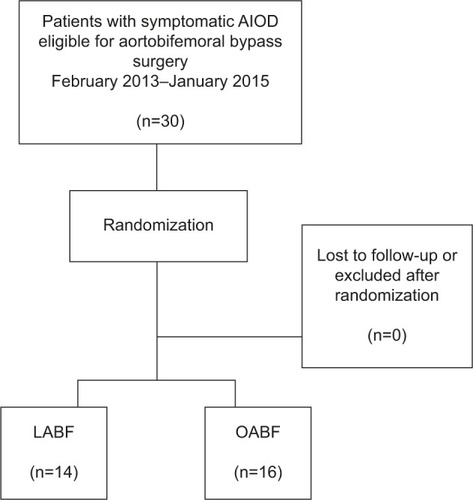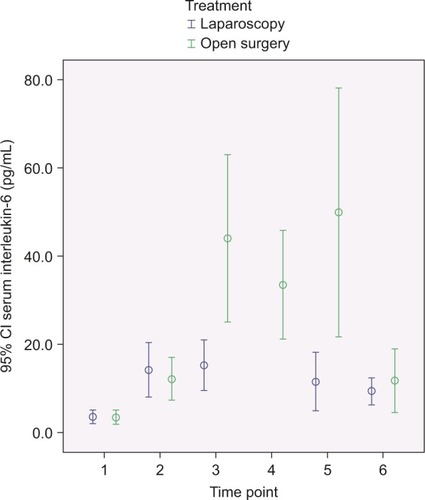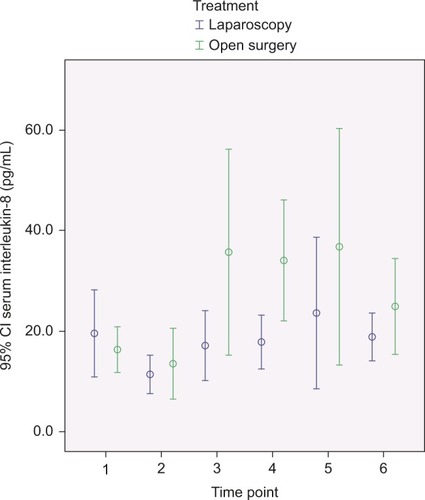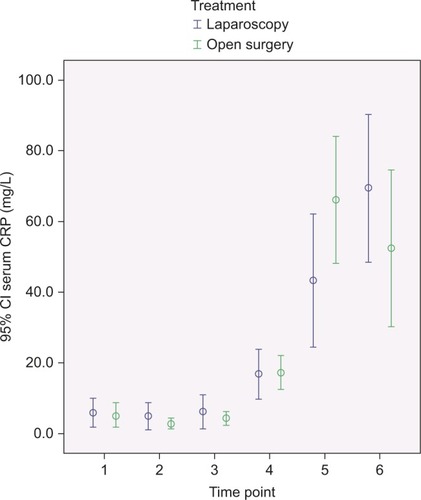Figures & data
Figure 1 Flowchart of patient population with aortoiliac occlusive disease (AIOD) treated with totally laparoscopic aortobifemoral bypass (LABF) or open aortobifemoral bypass (OABF).

Table 1 Baseline characteristics of patients treated with either totally laparoscopic or open aortobifemoral bypass for severe aortoiliac occlusive disease
Figure 2 Comparing mean serum level of interleukin-6 (pg/mL) at different time points during and after totally laparoscopic aortobifemoral bypass (LABF) versus open aortobifemoral bypass (OABF).

Figure 3 Comparing mean serum level of Interleukin-8 (pg/mL) at different time points during and after totally laparoscopic aortobifemoral bypass (LABF) versus open aortobifemoral bypass (OABF).

Figure 4 Comparing mean serum level of C-reactive protein (CRP) (mg/L) at different time points during and after totally laparoscopic aortobifemoral bypass (LABF) versus open aortobifemoral bypass (OABF).

Table 2 Comparison of area under curve (AUC) in laparoscopic aortobifemoral bypass (LABF) versus open aortobifemoral bypass (OABF) for the serum levels of interleukin-6 (IL-6), IL-8, and C-reactive protein (CRP)
Table 3 The effect of laparoscopic aortobifemoral bypass (LABF) versus open aortobifemoral bypass (OABF) on serum levels of interleukin-6 (IL-6), IL-8, and C-reactive protein (CRP), controlling for the confounding effect of coronary heart disease, using the general estimated equations (GEE) model
Table 4 Operation-related parameters for patients treated with either totally laparoscopic or open aortobifemoral bypass for severe aortoiliac occlusive disease
Table 5 Clinical outcome after laparoscopic aortobifemoral bypass (LABF) versus open aortobifemoral bypass (OABF)
